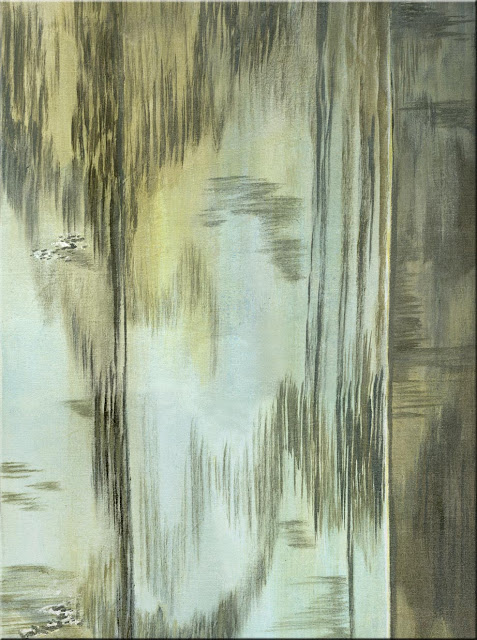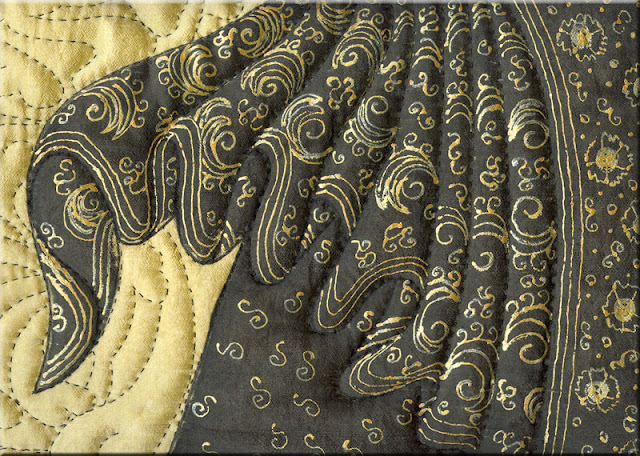The story of the film The 7th Sign says that the Guf contains only a finite number of souls. Each is “born” into a living being and the sparrow is the only creature which can see the soul descending to the body. That is why he sings.
But no matter how the film ends, the silk scroll depicts an image that is far more gloomy and is rather linked to an apocalyptical vision. The Guf IS empty, there is no bird song and human beings are born without a soul after the loss of the last innocencent soul (therefore the dead pregnant woman on the ground. The earth is burning after the last war and what is left are only hollow shadows represented in the dark transparent figures without a face.
Actually people allover the globe are currently facing a true apocalyptical threat and I wonder how many will come afterwards, somewhere else? It does not seem to end and remains a part of humankind’s history. It is very depressing. I can only pray for the people and the end of all that violence from all sides.
"The 7th Sign"
65" x 23"
silk
“In Jewish mysticism, the Chamber of Guf is the Hall of Souls, located in the Seventh Heaven. Every human soul is held to emanate from the Guf. The Talmud teaches that the Messiah will not come until the Guf is emptied of all its souls. The mystic significance of the Guf is that each person is important and has a unique role which only he, with his unique soul, can fulfill. Even a newborn baby brings the Messiah closer simply by being born. In keeping with other Jewish legends that envision souls as bird-like, the Guf is sometimes described as a columbarium, or birdhouse. Folklore says sparrows can see the soul’s descent and this explains their joyous chirping.
The peculiar idiom of describing the treasury of souls as a “body” may be connected to the mythic tradition of Adam Kadmon, the primordial man. Adam Kadmon, God’s “original intention” for humanity, was a supernal being, androgynous and macro-cosmic (co-equal in size with the universe). When this Adam sinned, humanity was demoted to the flesh and blood, bifurcated and mortal creatures we are now. According to Kabbalah, every human soul is just a fragment (or fragments) cycling out of the great “world-soul” of Adam Kadmon. Hence, every human soul comes from the “guf [of Adam Kadmon].” (Wikipedia)
I think the symbolic character of this silk scroll can be applied to many regions of this world where violence, lawlessness and arbitrariness have taken over, where people are killed no matter for what reaon. Whether you look towards Somalia, Sudan/Darfur, Syria – there is no difference for the people who are the victims of a regime that thinks it can do what it wants. Where has humanity diasppeared to? When does all this suffering end?
~~~
.





















































